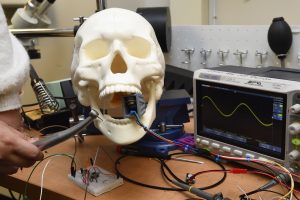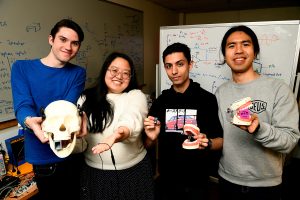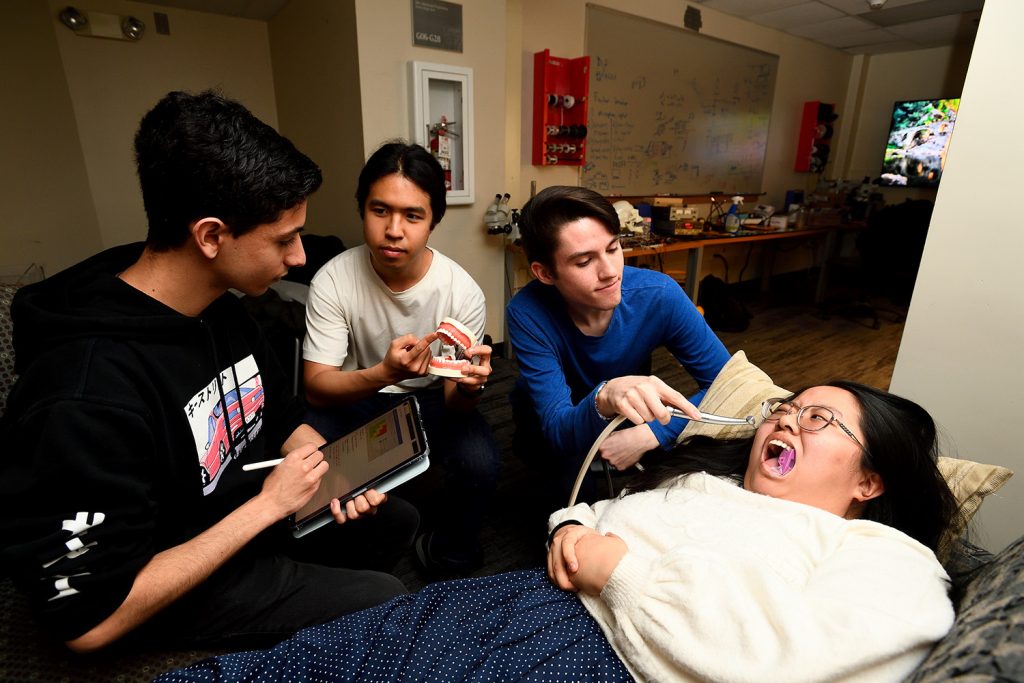
A team of mechanical engineering students is working with a Florida dentist to develop a device that aims to make dental procedures less daunting for many patients.
The apparatus, which dampens the whirring and buzzing sound of the drill used during procedures such as root canals, was inspired by Tallahassee-based dentist Jordan Rigsby’s personal experience undergoing the loud procedure himself after having performed it on others many times.
“It was really jarring,” Rigsby said of the sound and vibrations that came when the drill met teeth. “Our dental drills are very quiet these days, but the conduction from the bone to the ear results in the sound being quite loud for many patients. It made me understand why patients dreaded that sound almost as much as they worried about pain during dental procedures.”
He wondered if the concept behind noise-canceling headphones could be translated to work inside the mouth to make the procedure less noisy—and thus, less frightening—for his patients.
“I was playing around with some things, and I hooked an audio wire into a dowel (a wooden peg), and when I bit down I could hear music,” he said. “I thought that if you hook it to a DC motor, it might be able to provide offsetting vibrations through the patient’s jaw which would dampen the effect from the drill.”

Conor Allan, Elizabeth Dolan, Daniel Shenkelman, David Paik
Rigsby contacted Johns Hopkins Engineering’s Senior Design program to ask students to refine his model and make noise cancellation a reality. The team members—mechanical engineering majors Conor Allan, Elizabeth Dolan, David Paik, and Daniel Shenkelman—did just that, using an anatomical model skull, and their own mouths, as sound conductors. The team will present its prototype at the Whiting School’s annual Design Day on May 1.
“The device picks up vibrations and produces an ‘anti-noise’ wave that is the exact opposite of the unwanted noise,” said Shenkelman. “The noise and anti-noise cancel, like adding -1 to 1, equaling zero.”
Using the student team’s device, dental patients can simply take a break from the growling and often frightening sound of the drill or use it to tune into music for an added distraction.
The team’s solution differs from that used in headphones in one crucial way: while headphones capture vibrations from the air, the dental plate dampens vibrations sourced from inside the patient’s mouth.
“This is a difficult problem to solve, and there is no commercially available solution,” said Shenkelman. “Creating a system that makes patients more comfortable is very rewarding to me and the team as engineers.“
“They made a really great prototype,” Rigsby said. “We’ve been utilizing it ever since.”
